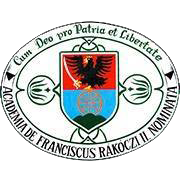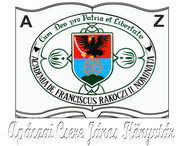Ezzel az azonosítóval hivatkozhat erre a dokumentumra forrásmegjelölésben vagy hiperhivatkozás esetén:
https://dspace.kmf.uz.ua/jspui/handle/123456789/5518Összes dokumentumadat
| DC mező | Érték | Nyelv |
|---|---|---|
| dc.contributor.author | Молнар Кристина | uk |
| dc.contributor.author | Molnár Krisztina | hu |
| dc.contributor.author | Molnar Krystyna | en |
| dc.date.accessioned | 2025-11-13T11:41:25Z | - |
| dc.date.available | 2025-11-13T11:41:25Z | - |
| dc.date.issued | 2025 | - |
| dc.identifier.citation | In Наукові записки. Серія: Педагогічні науки. 2025. Випуск 13. c. 170-174. | en |
| dc.identifier.isbn | 978-617-653-092-3 | - |
| dc.identifier.issn | 2786-6912 (Print) | - |
| dc.identifier.issn | 2786-6904 (Online) | - |
| dc.identifier.other | DOI: https://doi.org/10.59694/ped_sciences.2025.13.170 | - |
| dc.identifier.other | DOI: 10.59694 | - |
| dc.identifier.uri | https://dspace.kmf.uz.ua/jspui/handle/123456789/5518 | - |
| dc.description | https://opac3.brff.monguz.hu/hu/record/-/record/bibBRF00015727 Весь випуск: https://sites.google.com/uica.education/nayka/%D0%BD%D0%B0%D1%83%D0%BA%D0%BE%D0%B2%D1%96-%D0%B7%D0%B0%D0%BF%D0%B8%D1%81%D0%BA%D0%B8-13 | en |
| dc.description.abstract | Резюме. Різноманітність ромських громад як в культурному, так і в мовному плані є майже загальновживаним поняттям у різних дискурсах; саме їхня різноманітність стала однією з поширених характеристик представників ромської національної меншини. Люди, яких у всьому світі називають ромами, є членами гетерогенної категорії спільнот, що розмовляють різними мовами та інтегрують громади з різними ідентичностями та культурами під зовнішнім впливом. | uk |
| dc.description.abstract | Abstract. The diversity of Roma communities, both culturally and linguistically, is almost a truism in various discourses; it is precisely their diversity that has become one of the common characteristics of Roma. The people referred to worldwide as Roma nationality are members of a heterogeneous category of communities speaking different languages and integrating communities of different identities and cultures under external influence. As early as the 1950s, cultural anthropologists began to work on the construction of an understanding of Gypsy or Roma identity. Over the last decades, historical research on Gypsies has unfolded little by little, with scientific claims about various processes of adaptation, successful models of coexistence, settled lifestyles, niche economic activity or exclusion, prejudice, persecution and poverty. In connection with the progressive assimilation, the right to receive national education is a primary issue, a question of national existence. The right to organize a national program is particularly important for the principle of equal opportunities, even if it is not mandatory in itself. The analysis of the processes shows that in our country national education was implemented differently for each nationality, so that the tasks of national education of Gypsies/Roma from the very beginning to the present day are particularly different from each other. At the beginning of the Soviet period, some Roma were not Hungarian-speaking, did not attend preschool education at all, and by the early 1960s most of them did not even go to school. | en |
| dc.language.iso | uk | en |
| dc.publisher | Видавництво «Код» | en |
| dc.relation.ispartofseries | Серія: Педагогічні науки;Випуск 13. | - |
| dc.rights | Attribution-NonCommercial-NoDerivs 3.0 United States | * |
| dc.rights.uri | http://creativecommons.org/licenses/by-nc-nd/3.0/us/ | * |
| dc.subject | життя ромського населення | uk |
| dc.subject | навчання ромської національних меншин | uk |
| dc.subject | life of the Roma minority | en |
| dc.subject | education of the Roma national minority | en |
| dc.title | Мовні проблеми та освітньо-навчальні можливості ромських дітей | en |
| dc.title.alternative | Language problems and educational opportunities for roma children | en |
| dc.type | dc.type.study | en |
| Ebben a gyűjteményben: | Наукові записки. Серія: Педагогічні науки | |
Fájlok a dokumentumban:
| Fájl | Leírás | Méret | Formátum | |
|---|---|---|---|---|
| Movni_problemy_osvitno_navchalni_mozhlyvosti_romskykh_2025.pdf | In Наукові записки. Серія: Педагогічні науки. 2025. Випуск 13. c. 170-174. | 1.35 MB | Adobe PDF | Megtekintés/Megnyitás |
This item is licensed under a Creative Commons License





